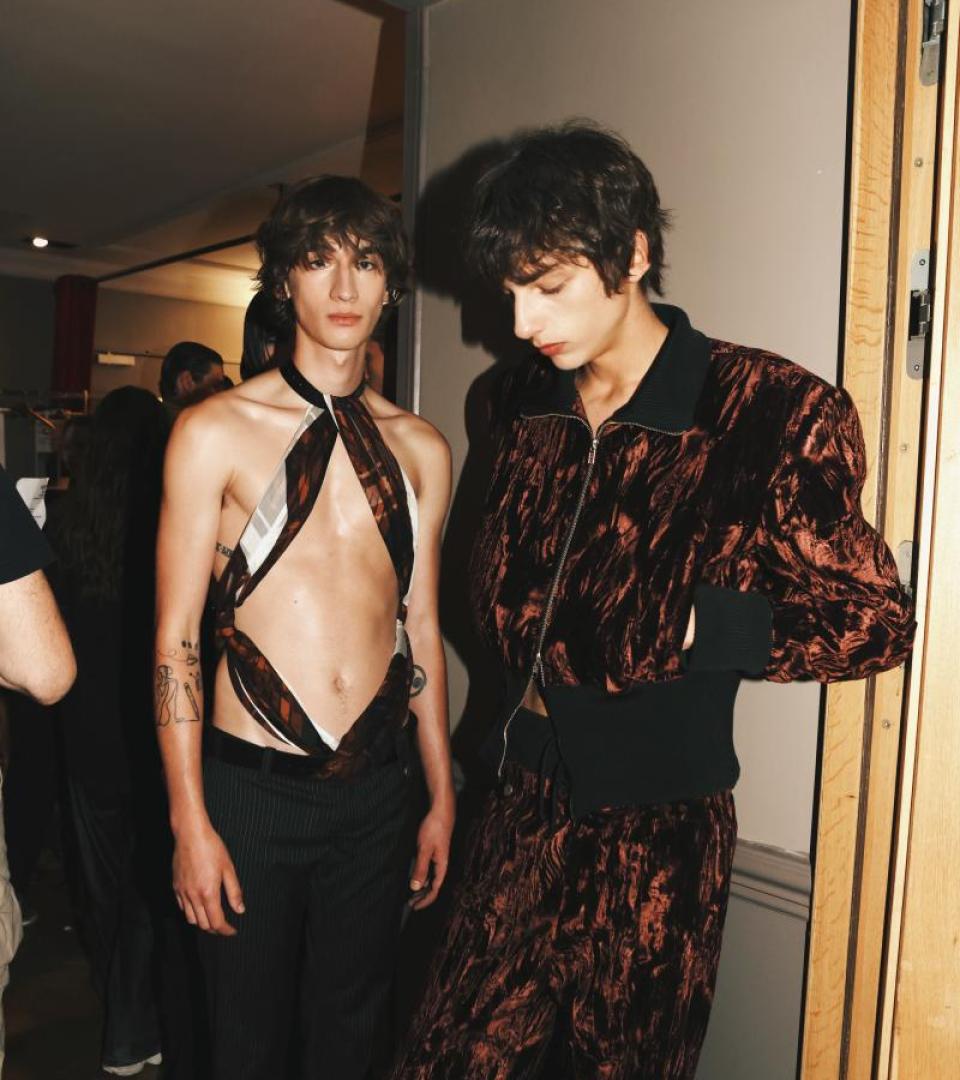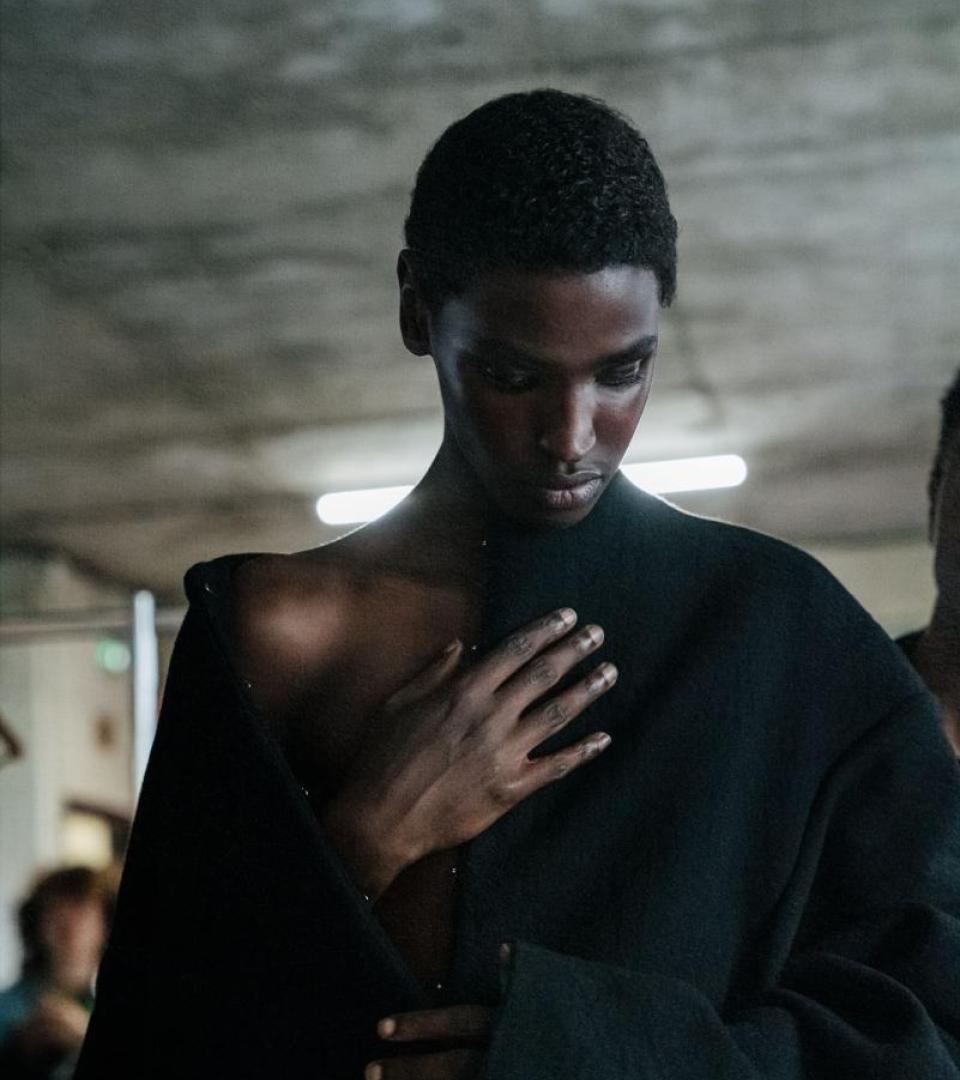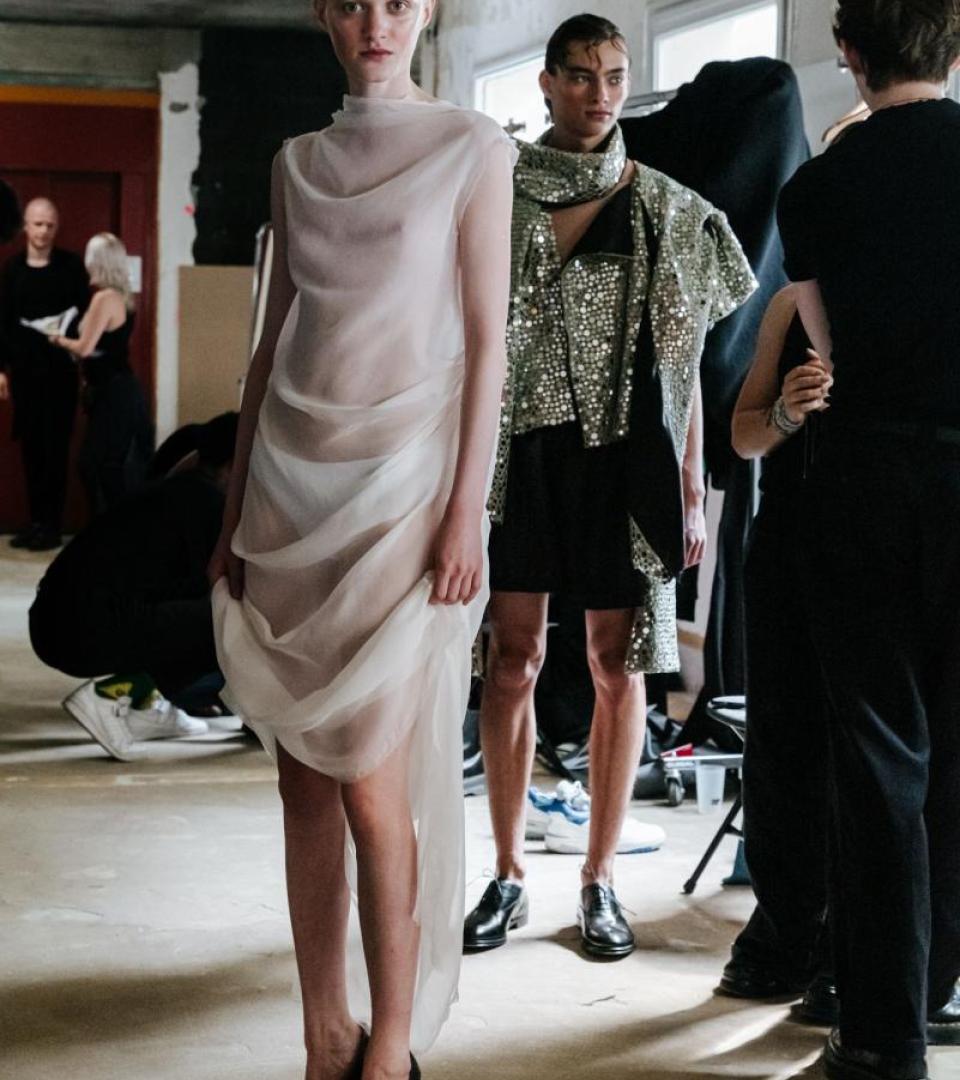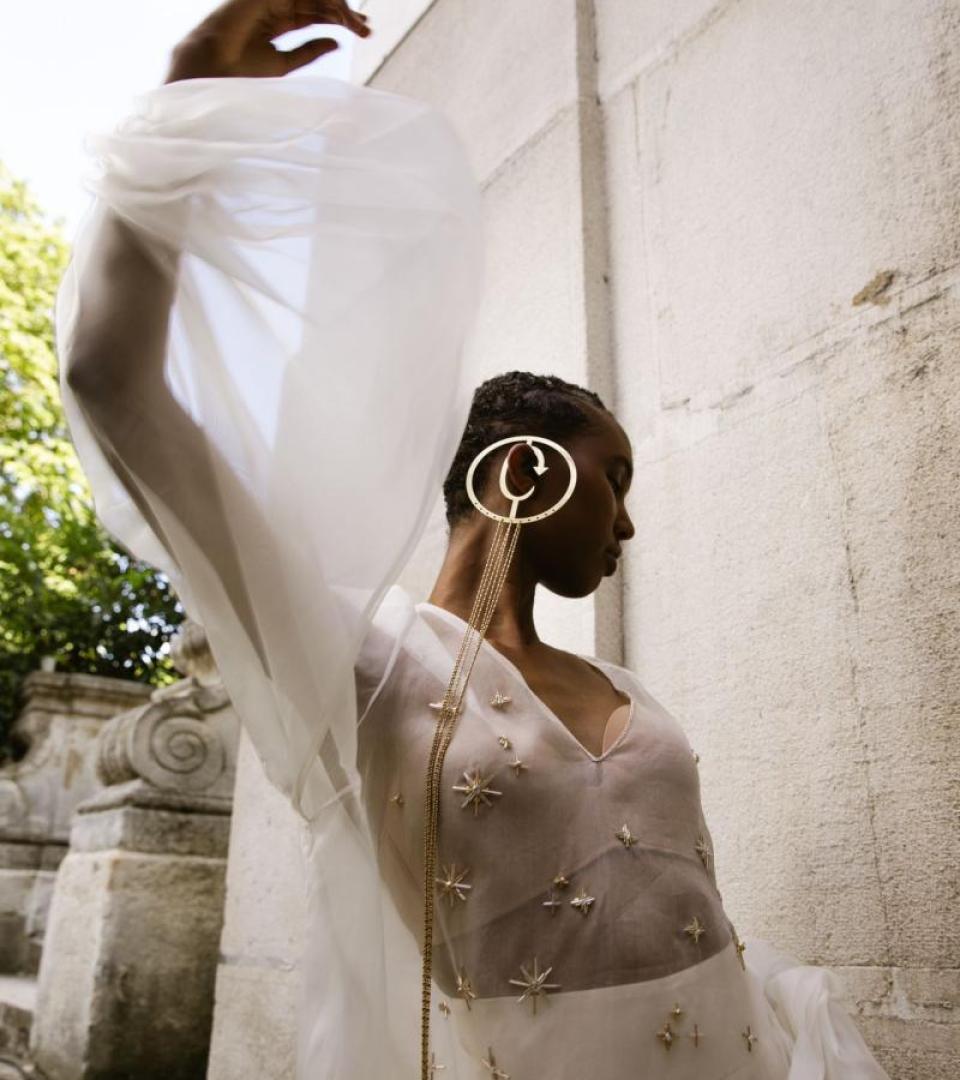Nikita Vlassenko – Figure of style
Shaved and tattooed head, smoked glasses, draped in black from head to toe, and a grin. Nikita Vlassenko, an independent stylist, cultivates his own uniform and those of others, and advocates fashion as a tool for smashing the norms of representation.
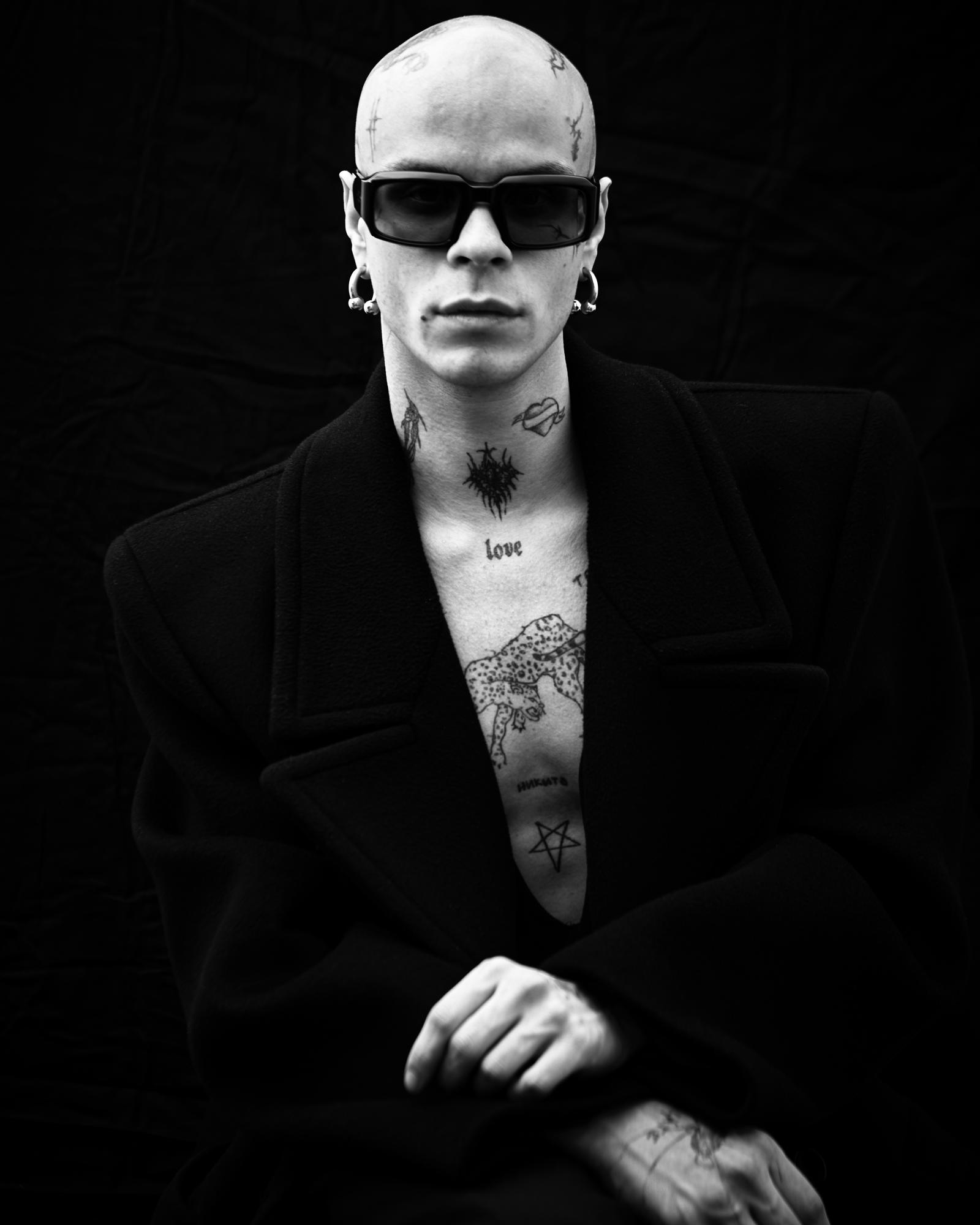
© Tsuvasa Saïkusa / @tsuvasasaikusa
A stylist composes and implements a creative vision. It is a shadowy profession, which suits Nikita Vlassenko just fine, dressed all in black, yet never blending in with the crowd. Born in Ukraine, Nikita grew up in Germany before settling in Paris at the age of 18. "I knew I had to come to Paris", enthuses this fashion fanatic since his early childhood. He took the Beaux-Arts and ESSEC Business School entrance exams at the same time, reflecting the high degree of unclassifiability of this creative mind. "I chose ESSEC. I needed a framework. I learned how to present myself and sell a project." At BETC, VTMNTS then Ritual Projects, Nikita explored the various professions in the sector: "I learnt a lot about what I liked and what I didn't want to do." He then joined the Institut Français de la Mode while working at Antidote Magazine. "That's when I realised that I wanted to become a stylist.” The path opened up. He even co-founded a concept store, “L'Insane.” Wandering between pieces signed by Mugler, Helmut Lang and Palomo Spain, little strokes began to spark. In November 2021, the turning point arrived: Nikita went freelance. “I'd already met a lot of people and had a lot of support,” he admits. His first steps on his own were outstanding: “In three months, I styled an editorial for Têtu Magazine that caused quite a stir with two men in Miu Miu sets; I dressed Léna Situations for the Met Gala; and I started my first project with Bilal Hassani.”
“We have to learn how to trust what we don't know.”
When Nikita and Bilal met at the beginning of 2022, the stylist knew straight away what he wanted to build: “He's a polarising figure in France with a whole fashion universe to create.” The singer, who represented France at Eurovision in May 2019, was then dusting off the standards of representation in the French media sphere but had not yet acquired the status of fashion icon that he now holds. To introduce “the new Bilal, the fashion character,” it was therefore essential to start with a blank canvas – a raw linen canvas to be precise. The reference for Nikita was obvious: Martin Margiela's Spring-Summer 1997 collection. In May 2022, Bilal Hassani appeared at the Cannes Film Festival in a hollowed-out Stockman mannequin bust. A Couture support, where imaginations can summon up the infinity of textile creation, like an echo of the intelligence of the hand, of ancestral know-how and its transmission. In short, the history of Couture packed into one piece – and one that was particularly difficult for a stylist to unearth. But Nikita was determined: “I knew I absolutely had to have this piece.”
From then on, the stylist handpicked pieces from both prestigious and emerging fashion Houses, constantly reinventing Bilal Hassani's fashion universe. From Issey Miyake's first Pleats Please to Jean Paul Gaultier, Alain Paul, Alaïa, Avellano, Comme des Garçons, Valentino Couture, Nikita shaped the singer's image with meticulously chosen, rare and powerful pieces. “Bilal Hassani is the most professional person I know. The only time he ever showed me a grudge was when I made him wear a bald cap with an Iris Van Herpen dress,” he recalls with a smile. And the fashion moments flowed, "Looking at all the looks, I think I worked without realising it." This is the very essence of a vocation, when work becomes playful, exploratory, and instinctive. In October 2023, Bilal Hassani joined the Hyères Festival fashion jury, chaired this year by Charles de Vilmorin. Nikita prepared 18 outfits for three days. Chanel, Julien Dossena, Romain Kremer, Marine Serre, Sébastien Meunier... Nikita and Bilal “pay tribute to those who have left their mark on this competition and its history.”
"A stylist's fashion culture has to be encyclopaedic.”
Fashion is much more than just layering clothes; it's a central pillar of our identity. It's a powerful way of self-expression, of presenting oneself to the world, and of asserting who one is. "If you want to fight something, you go all out, and it becomes a norm," insists Nikita, referring to Mary Quant and her revolutionary miniskirt circa 1960. Together with Bilal, they create new fashion images that enrich our imaginations and push back the boundaries of representational norms. In his handbag, black of course, lies Dana Thomas's bestseller, a fashion bible of sorts, Gods and Kings (2015), dedicated to the titans Alexander McQueen and John Galliano. “I've already read it several times, but it's incredible. A stylist's fashion culture has to be encyclopaedic. I need to have the looks running through my head to work.”
Nikita also works with singer-songwriter Eddy de Pretto, with a different approach. "Eddy expresses himself through his songs.” The fashion work must therefore "effectively combine his own identity with his universe. With Bilal, it's about creating a universe,” he suggests. Instead of fitting artists into a system of trends, it's a matter of thinking about their characters in the long term: "I avoid following everything that's going on too much, otherwise you get lost in it. What interests me is the virality of certain pieces.”
“I know how to step aside at the right moment.”
One summer, at the age of 13, Nikita met Karl Lagerfeld in Saint Tropez, where he was on holiday with his family. "We spoke a few words, a few minutes, and it changed my life." At this age, it's quite difficult to be accepted by your peers when you're a bit different; the sometimes bumpy school paths of young, effervescent creatives. But when the Kaiser grants you his time, if he gives you value, then there's no longer the slightest reason to let hatred win. Nikita is humbly inspired by this idea of a uniform and has built himself an instantly recognisable visual identity. "It's all calculated", he says as he raises his smoked glasses, covered in black from head to toe. Today, the fans of those he dresses recognise him, but Nikita points out: “I know how to step aside at the right moment. I don't want to be visible, just to be recognised. I just want my work to be acknowledged by people I respect.”
Whether at fashion shows and presentations, at events alongside Paris Fashion Week, or at the Villa Noailles, Nikita Vlassenko is always surrounded by his close friends. As if those who share the same passion always end up reuniting and re-forming a group of friends in the playground - that of fashion from now on.
Reuben Attia
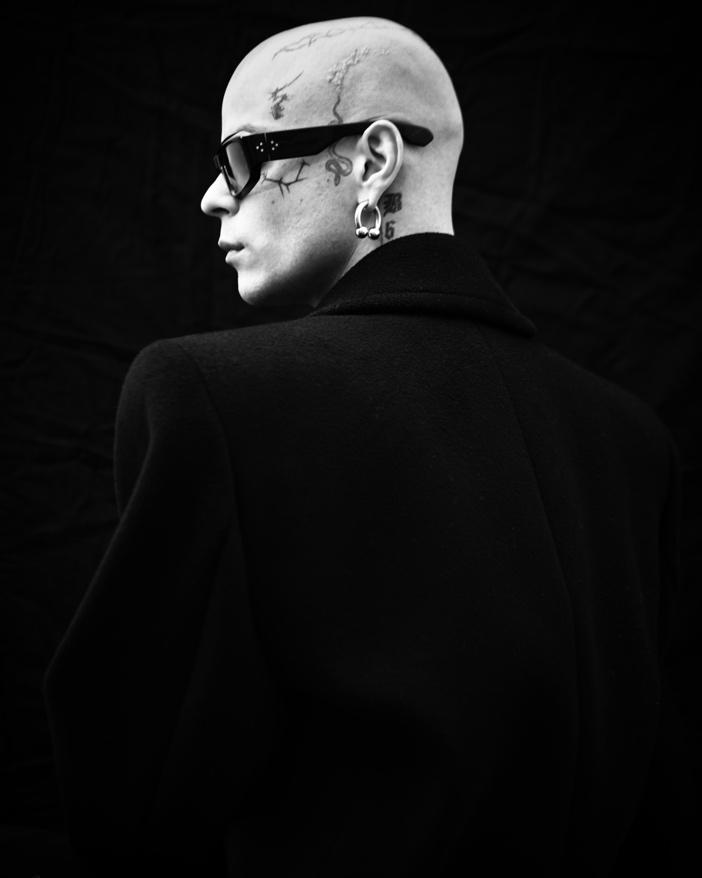
© Tsuvasa Saïkusa / @tsuvasasaikusa
